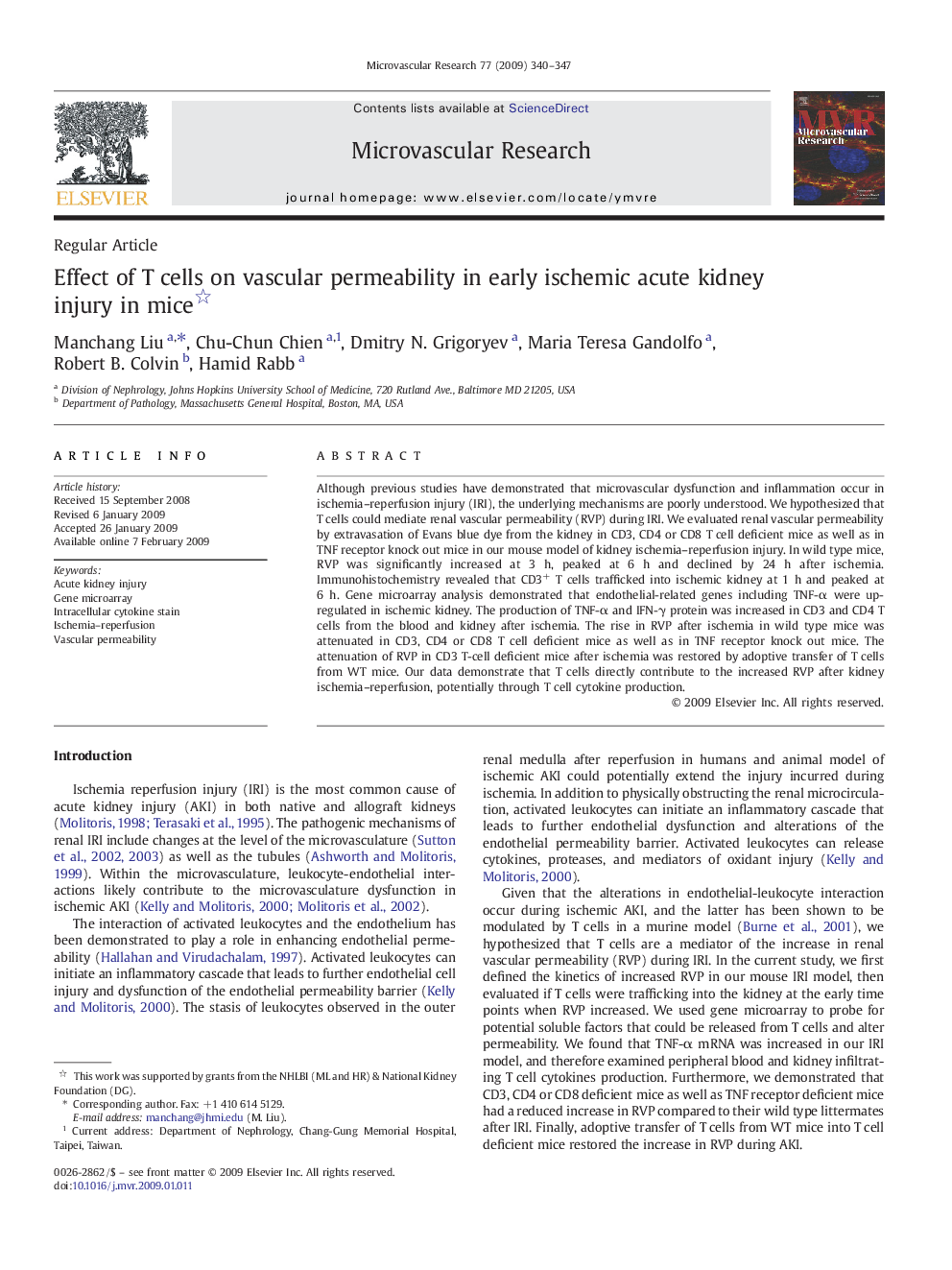| Article ID | Journal | Published Year | Pages | File Type |
|---|---|---|---|---|
| 1995391 | Microvascular Research | 2009 | 8 Pages |
Although previous studies have demonstrated that microvascular dysfunction and inflammation occur in ischemia–reperfusion injury (IRI), the underlying mechanisms are poorly understood. We hypothesized that T cells could mediate renal vascular permeability (RVP) during IRI. We evaluated renal vascular permeability by extravasation of Evans blue dye from the kidney in CD3, CD4 or CD8 T cell deficient mice as well as in TNF receptor knock out mice in our mouse model of kidney ischemia–reperfusion injury. In wild type mice, RVP was significantly increased at 3 h, peaked at 6 h and declined by 24 h after ischemia. Immunohistochemistry revealed that CD3+ T cells trafficked into ischemic kidney at 1 h and peaked at 6 h. Gene microarray analysis demonstrated that endothelial-related genes including TNF-α were up-regulated in ischemic kidney. The production of TNF-α and IFN-γ protein was increased in CD3 and CD4 T cells from the blood and kidney after ischemia. The rise in RVP after ischemia in wild type mice was attenuated in CD3, CD4 or CD8 T cell deficient mice as well as in TNF receptor knock out mice. The attenuation of RVP in CD3 T-cell deficient mice after ischemia was restored by adoptive transfer of T cells from WT mice. Our data demonstrate that T cells directly contribute to the increased RVP after kidney ischemia–reperfusion, potentially through T cell cytokine production.
